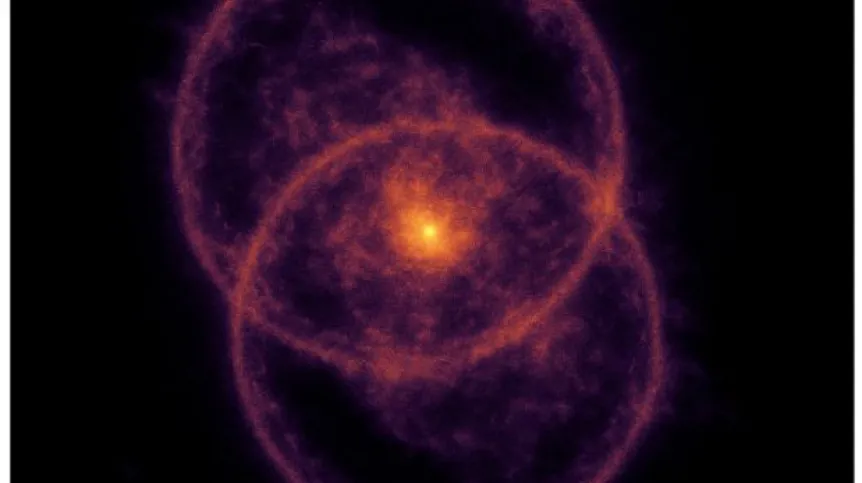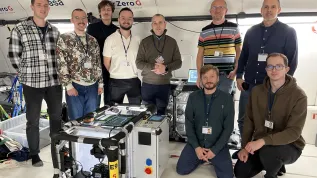
Astrophysicists, including scientists from Poland’s National Centre for Nuclear Research (NCBJ), have identified the most distant and most powerful odd radio circle (ORC) known to date — a vast, ring-shaped cloud of magnetised plasma whose image comes from 7 billion years ago.
ORCs are a recently recognised class of mysterious cosmic structures, first discovered only six years ago.
They appear as giant, faint radio rings, often more than 20 times the size of the Milky Way, and are composed of charged plasma emitting radio waves.
Their origins remain unclear, with leading theories suggesting they may form from shockwaves produced by merging black holes or powerful galactic winds.
The newly identified ORC, designated RAD J131346.9+500320, lies at a redshift of about 0.94, meaning we observe it as it appeared when the Universe was half its current age.
The structure spans nearly a million light-years in diameter—making it the largest and most powerful ORC ever detected—and is only the second known example with two intersecting rings.
The discovery was made through the RAD@home Astronomy Collaboratory, a citizen science project linking professional astronomers with volunteers.
The team used data from LOFAR, the world’s most sensitive low-frequency radio telescope, which combines antennas across Europe.
“These results show that ORCs and related radio rings are part of a broader family of exotic plasma structures created by the interplay of black holes, winds, and galaxy environments,” said Dr Pratik Dabhade, astrophysicist at NCBJ and co-author of the study. “The fact that citizen scientists found them reminds us of the continued value of human eyes, even in the age of artificial intelligence.”
“This work shows how professional astronomers and citizen scientists together can push the boundaries of discovery,” added Dr Ananda Hota of the University of Mumbai, founder of the RAD@home initiative and lead author of the research. “ORCs are among the most bizarre and beautiful cosmic structures we’ve ever seen—and they may hold vital clues about how galaxies and black holes co-evolve.”
The NCBJ notes that the research also strengthens Poland’s role in international radio astronomy.
The institute is one of eight organisations forming the new Polish SKA Consortium, which is preparing the country’s scientists to join the Square Kilometre Array Observatory (SKAO) — the world’s largest radio telescope now under construction.
Alongside the record-breaking ORC, the team identified two other unusual radio galaxies:
RAD J122622.6+640622, stretching nearly three million light-years, with a jet bending sharply and forming a 100,000-light-year-wide ring and RAD J142004.0+621715, measuring 1.4 million light-years, showing a similar ring structure at the end of a narrow jet.
All three galaxies have combined masses of around 100 trillion Suns, suggesting that interactions between high-energy plasma jets and surrounding hot gas may create these rare and striking rings.
Future observatories such as SKA, along with optical surveys like DESI and LSST, are expected to reveal more about how these enigmatic structures form and evolve.
The findings were published in the Monthly Notices of the Royal Astronomical Society.
A video animation showing an artist’s rendering of the newly discovered ORC rings is available here. (PAP)
PAP - Science in Poland
zan/ agt/ kap/
tr. RL













